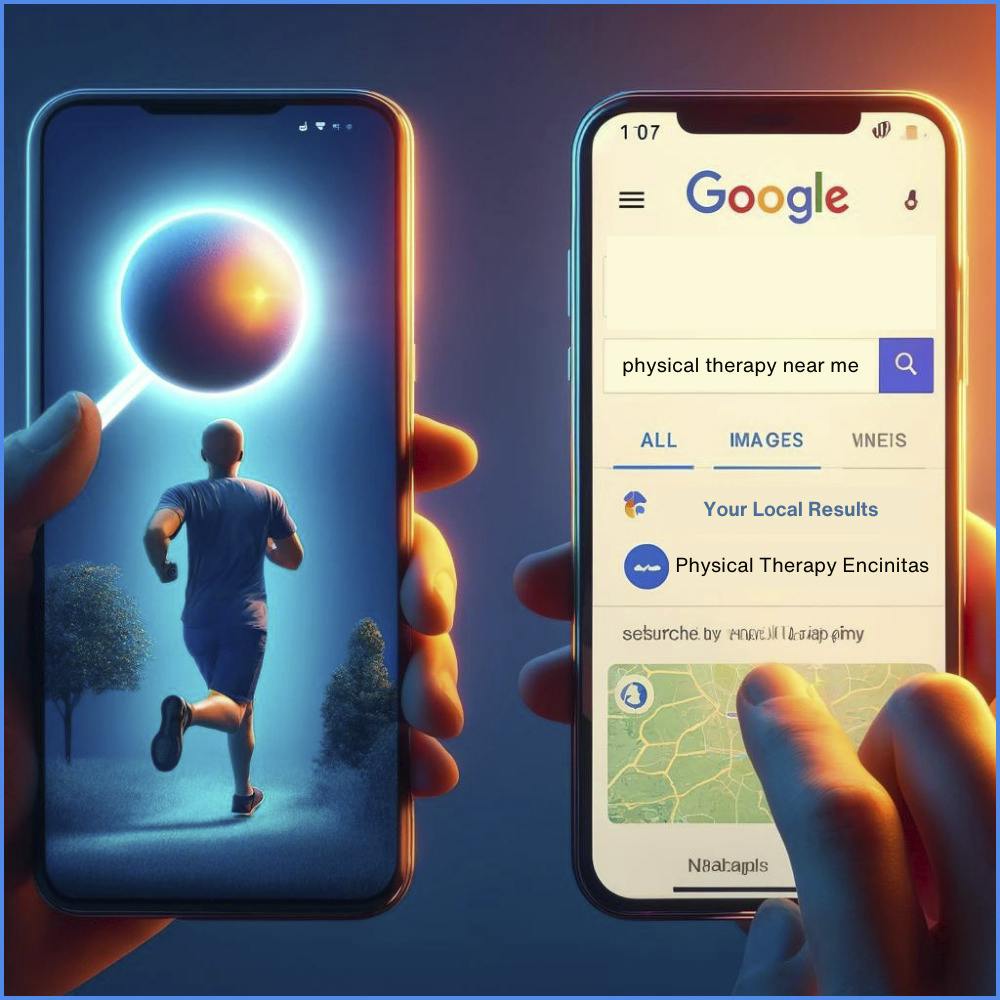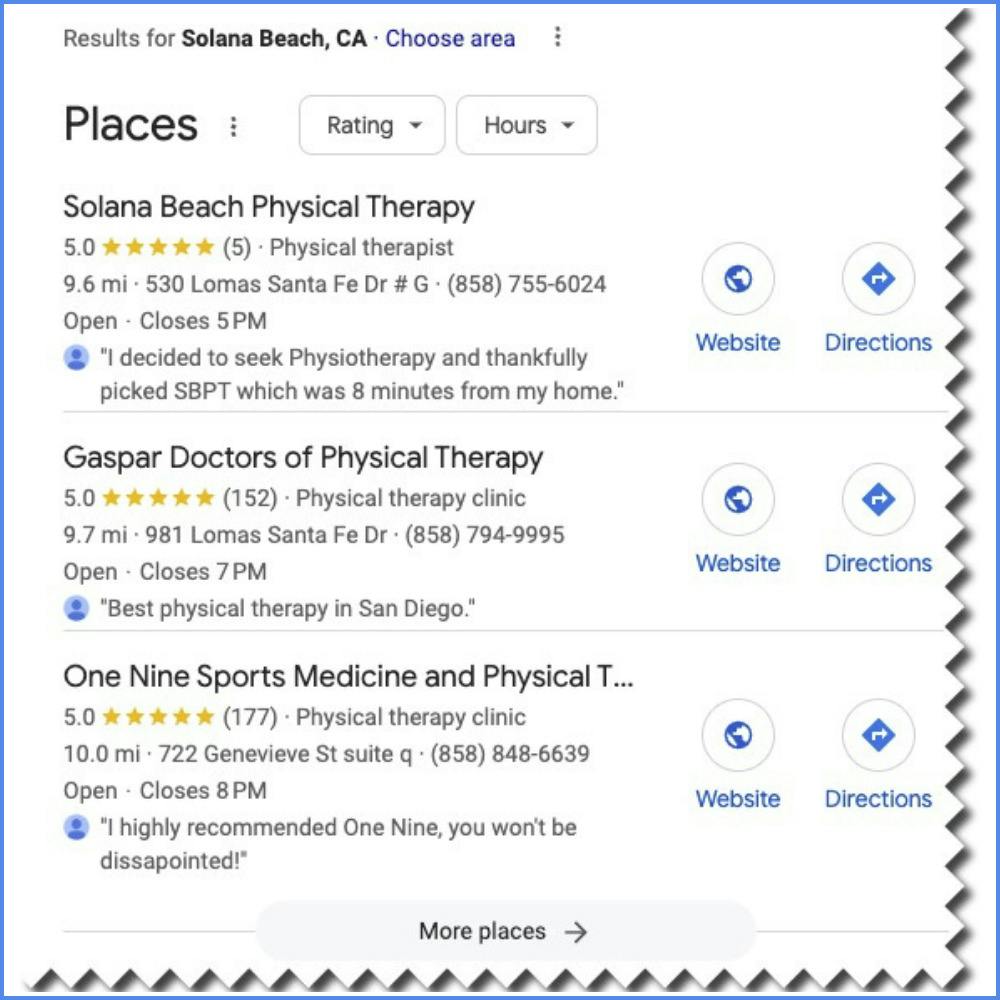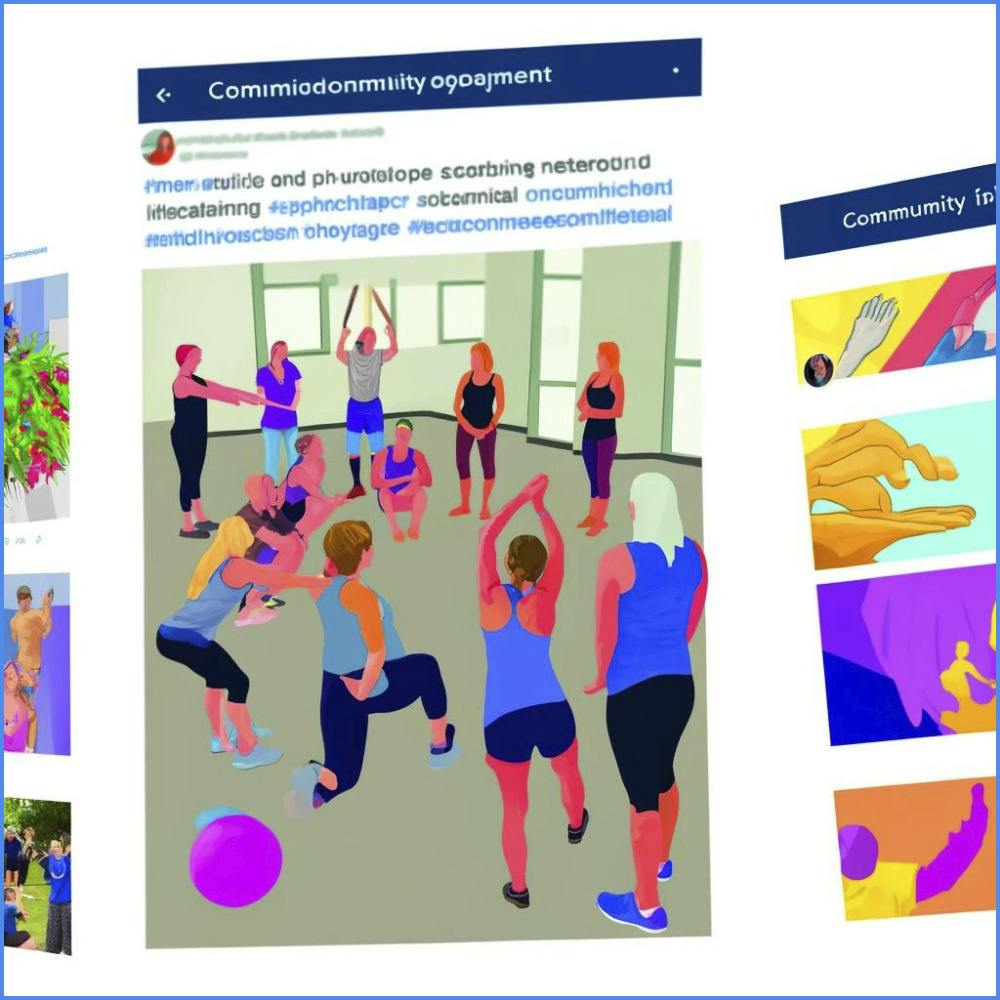In today’s digital-first world, local SEO stands as a beacon for physical therapy private practices aiming to share their services for the local community. It’s not just about being seen; it’s about being found by the right people at the right time. Here’s how to harness the power of local SEO to elevate your practice.
Understanding Local SEO and Its Importance
Local SEO is the compass that guides potential patients to your Google Business Listing, your website, and ultimately your practice when they’re searching for the services you offer. For physical therapy clinics, this means appearing in search results for “your business name”, “physical therapy near me”, “physical therapy”, and “physical therapy city”. But why is local SEO so critical?
Imagine a person recovering from knee surgery in need of a reputable physical therapist in their area. They turn to Google, typing in “physical therapy near me.” Your practice appears at the top of the search results, not by chance, but because you’ve mastered the art of local SEO.
The Path to Dominating the Local Search
The journey through local SEO is multi-faceted, involving meticulous optimization both on and off your website. Here’s how to embark on this path:
1. Optimizing for Google’s Map Pack
The Map Pack, a set of three local business listings highlighted at the top of Google’s search results, is prime digital real estate. To secure your spot here:
- Ensure your Google Business Profile is impeccable. Fill out every detail: your practice’s name, address, phone number (NAP), services, and operating hours. Regular updates and high-quality photos of your clinic can enhance your profile’s appeal.
- Solicit and manage reviews. Encourage happy patients to leave positive reviews and respond thoughtfully to each one, showcasing your practice’s commitment to patient satisfaction. Doing so on a consistent basis can help establish your practice as a prominent business in the community.
- Add content to your Google Business Profile. Adding images and video can help differentiate your practice from others. SEO companies that have done some statistical research have suggested that adding content may help improve your search rankings.
2. Diving Deep into Local Keyword Research
Understanding what potential patients are searching for is pivotal. Tools like Google Keyword Planner and Moz Local can uncover the terms and phrases your target audience uses. For instance, you might find that “post-surgery physical therapy in [City]” is a popular search query, signaling a valuable keyword to include on your website.
3. Voice Search Optimization
With the rise of voice search, optimizing for conversational queries is increasingly important. People often use longer, more natural sentences when using voice search. For example, instead of typing “physical therapy NYC,” they might ask, “Where can I find a physical therapist for ankle injury near me?” While you may choose to incorporate these conversational phrases into your content, the Google search algorithm is so good that it isn’t absolutely necessary for the very narrow niche of physical therapy.
4. Crafting Local Content
Your website should be a treasure trove of information not just about your services, but also about how they relate to your local area. Posts about the location and areas you serve within your city can position your practice as both an expert physical therapy provider and a community authority.
5. Harnessing the Power of Backlinks
Backlinks from reputable local websites can significantly boost your SEO efforts. Participate in local health fairs or sponsor a community sports team, and then share these stories online. Local news outlets or community websites might cover the event and link back to your website, enhancing your local SEO.
6. Leveraging Social Media
While not a direct ranking factor for SEO, social media can amplify your local visibility. Regular posts about your services, team, and happy patient testimonials, especially when tagged with your location, can drive local engagement and traffic to your website.
In Conclusion
Local SEO for physical therapy private practices is an ongoing journey, requiring consistent effort and adaptation to changing search trends. By implementing the strategies outlined above, you can improve your online visibility, attract more local patients, and establish your practice as a pillar of the community.
Remember, the goal of local SEO is not just to lead the search engine rankings but to connect your practice with individuals in need of your expertise and care. By focusing on these strategies, you’re not just optimizing for algorithms; you’re paving the way for healthier, happier communities.
Looking For A Physical Therapy Marketing Company That Can Do All Of This For You?
For over 20 years we’ve been helping physical therapy private practices efficiently, effectively, and affordably marketing their practices online. If you’d like to connect with us, simply request a time on David Straight, DPT’s calendar https://davidstraight.youcanbook.me




























